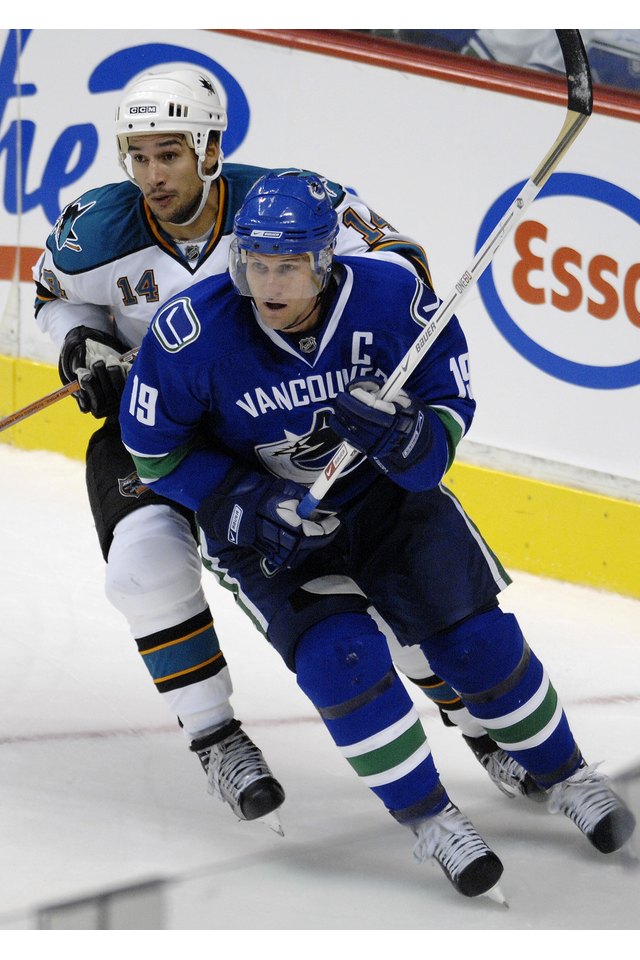What Does It Mean to Shadow in Hockey?

Walk outside in the sun and look down -- wherever you go, you’ll see your shadow. That same principle applies to shadowing in hockey. The “shadow” is a player -- typically a forward -- who’s assigned to defend the opposing team’s high scorer. Wherever the big scorer travels on the ice, the shadow always follows. Indeed, numerous hockey coaches have famously told players that if the man they’re shadowing walks to a concession stand to buy popcorn during the game, they should walk into the stands right behind him.
Shadowing a Man Without the Puck
When the player you’re shadowing doesn’t have the puck, your main job is to stay close to him. You’ll try to prevent him from acquiring the puck, if possible, or will try to limit his maneuvering room if he does get the puck. Your stick should be on or near the ice and in front of you so you can deflect a pass that comes his way. You’ll typically remain between the scorer you’re shadowing and your net, even when your team has the puck in the offensive zone. You may get involved in the offense if the situation permits, but your primary task is to stick tight to your man. Basically, the team is sacrificing your offensive contribution to try to stop the opposing scorer from doing any damage.
Shadowing a Man With the Puck
There are a variety of tactics to employ in man-to-man hockey defense. If you’ve remained close to the offensive star you can legally body check him when he has the puck, to force him to give up possession. Indeed, the hockey axiom states that defenders should “play the man, not the puck,” because if you swat at the puck with your stick, a gifted puckhandler can make you miss. Alternatively, if you’re in position to do so, place your stick under the offensive player’s stick and lift it off the ice, preventing him from handling the puck. If your man is skating into your defensive zone, try to position yourself so the player must skate toward the boards, rather than into the center of the ice. By forcing him wide he’ll be at a more difficult scoring angle.
On the Power Play
Shadowing typically occurs when both teams are at even strength. But it’s not unheard of for a team to employ a shadow while killing a penalty, using hockey’s version of a basketball “box-and-one” defense. For example, if your team is playing one man short, the opponents have five skaters on the ice to your team’s four. If you’re assigned to shadow an opposing forward, your three remaining teammates will play a triangular zone defense while you skate across the ice, following your assigned man wherever he goes.
Physical Play
When shadowing a particularly talented scorer, some defensive players resort to physical tactics, bumping or slashing the offensive star even when he doesn’t have the puck. If this occurs within a referee’s sight the defender will likely draw a penalty because it’s illegal to hit a man who’s not in possession of the puck. Sometimes, however, the extra physical attention may throw the scorer off his game. Alternatively, the scorer may retaliate and be called for a penalty himself.
References
Writer Bio
M.L. Rose has worked as a print and online journalist for more than 20 years. He has contributed to a variety of national and local publications, specializing in sports writing. Rose holds a B.A. in communications.
